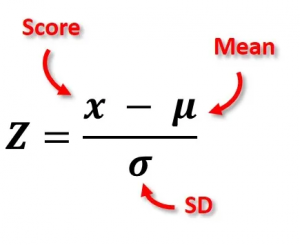Scoring
From zFairs Contest Management
- Scoring each project takes much consideration and deliberation by each judge. Unfortunately making sense of that score afterwards and determining the best Project Scores can also take much consideration and deliberation. On this page we cover that in a little more detail so you have the information needed to make the best decisions possible.
- For each Project and Judging result you will have access to up to 4 different scores. These are the Average Score for the Project, the Adjusted Score, the Raw Score and the Z-Score. See below for clarification on each of the individual scoring types.
Average Score
- This score takes the average out of all scores for a given project and presents that as its value.
Adjusted Score
- This score... (Please update me)
Raw Score
- This is the score as given by the judge(s) without any calculations or normalizations being applied.
z-Score
- This is a normalized score that takes into account all of the scores assigned by a given judge for a single round, normalizes them and returns a score based on the deviation from the standard for the score applied to the project.
Formula
- z-score is equal to the raw score minus the population mean, divided by the population standard deviation.
- What that translates to for zFairs is:
- In a given round a judge assigns scores to projects
- Those scores are evaluated and a mean & standard deviation value are calculated
- Those values are plugged in to the formula as seen above
- Each raw score from that judge is then normalized to a value representing how different from their standard score it is
- Values that are negative are below the average score for the judge and values that are positive are above the judge's average score
- An Example of this would be:
- Judge A judges 7 different projects and assigns the following scores out of 100: 87, 74, 91, 83, 77, 82 and 90
- Judge B judges the same 7 projects and assigns the following scores out of 100: 61, 59, 63, 70, 67, 54 and 67
- The mean / average for Judge A is 83.43 (rounded up to two decimal places for convenience)
- The mean / average for Judge B is 63 (this was not rounded nor was it planned but it is convenient)
- So for Judge A we calculate the
